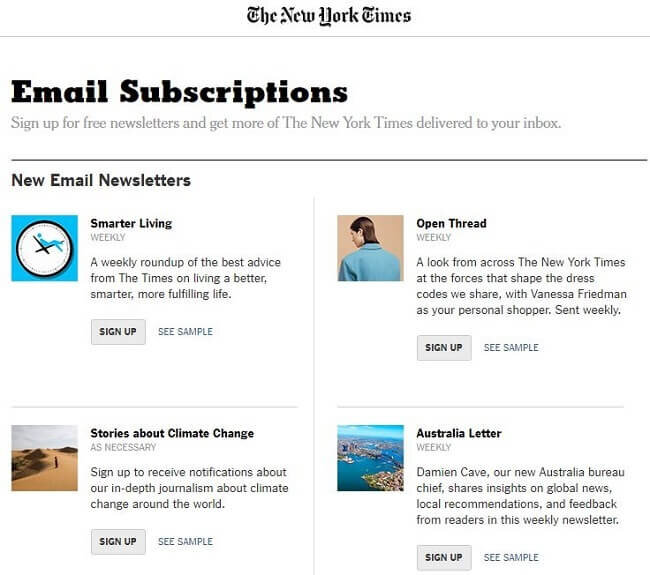Merging small and big data to create seamless Direct-to-Consumer (D2C) experiences
By overriding middle-man, service agents and wholesale chains, Direct-to-Consumer (D2C) brands have opened a new path for online success, through delivering products from the source, right to the hands of the consumer. Consumer spending online has also gone up exponentially with the spread of coronavirus (Statista, 2020 ). The pandemic has accelerated and heightened the importance of online, and going direct-to-consumer is crowned one of the golden strategies of 2021. Despite statewide lockdowns, international border closures, and supply-chain disruptions, D2C brands have attracted online traffic sales.
So brick-and-mortar gave way to online shopping, with easy access to services with new features, such as hyper-personalization, curbside pickups, and automated workflows. Customer experience is improving rapidly. This has not only led to an increase in sales, but brands that led through D2C are emerging from the pandemic at the win.
Selling online can insulate your brand against the next crisis. Consumers around the globe report spending more online as the coronavirus spread.
Source: Statista
A Harvard Business Review study shows that to fully understand your customer, you need to integrate big to small data. Big data, from sources such as clickstream, POS, CRM interactions, and so on, is effective at providing very detailed accounts of what your customer is doing. Small data, those gathered from surveys, focus groups, online research communities, and mobile ethnographies, tell you why they are taking those actions.
In this article, we look at how the collection of data points from the personal, quantitative, and qualitative standpoints can better insights and orient on designing great Customer Experience (CX).
#1 Identify personal data points collection for better customer analysis
Brands collect personal data such as name, date of birth, gender, address, marital status, social media profiles, and other non-personal identity information like the IP address, device IDs, and web browser cookies to make clear customer profiles and segments. To improve the risk-management abilities of businesses, data analytics requires the collection of data from a wide range of sources.
Tiffany & Co.
Top bar on Tiffany & Co’s website, asks the user to choose which country they are shopping from and by doing so they learn more about personal data of the consumer without scaring them off.
Source: bornfight
Brands reap rewards with a long term game plan
Data analytics is not incremental in information collection and analysis, brands should play for the long game. The longer one stays with the brand, the more detailed information can be gathered, giving a more complete image of the consumer. Look at four main KPIs: purchases, repeat purchases, average spend value, and customer lifetime value. These KPIs help identify loyal customers and look into customer journeys and develop those channels.
Persuading customers to talk about you is one of the fastest ways to grow your brand online. User-generated content (UGC) includes social media posts, unboxing videos, and product reviews. Nearly two-thirds of consumers say they read online reviews before making a purchase.
Marriott
Marriott hotels uses data analytics to observe and measure the local and global economic situation, weather, availability and reservation behaviour, cancellations and others to determine dynamic pricing – this resulted in a 5% revenue increase per room. Taking it a step further, Marriott can also adjust their hotel rates at nearby locations for high density events like a famous musician playing at Madison Square garden.
Source: bornfight
Uber
Uber Eats is a textbook example of how Big Data and data analysis can help businesses expand their services and give them a clear advantage over their competitors. Using their data as a leader in the taxi business they entered a saturated market for food delivery services. The accuracy of data gathered from preparation time for food, arrival of pick-up and drop off times, is helping them be recognised as a delivery service that delivers food while it is still warm.
Source: bornfight
#2. Measurable data for measurable consumer impact
We are talking quantitative data such as sales, transactions, marketing communication channels, social media activity, and conversation with customer service. In addition to clicks on websites, dates of purchase, and type of product bought, these are measurable data points on a consumer’s buying behavior.
The subscription economy is powered by a broad shift in buying behavior where consumers are choosing ongoing relationships with brands over one-off transactions. Brands selling beauty products, baby items, and food are turning their products into subscription services that can be combined, packaged, and personalized.
Netflix
Netflix has a 93% customer retention rate. Collecting data such as hours and time to watch the show, binge watching, finishing a show, rate of resuming after pausing a show to create a personalised account for each customer. This quantitative data will aid their future plan to use AI to create personalised trailers.
Source: bornfight
When choosing ASOS’s online subscriptions on creating new account, users opt-in for news and offers related to women’s or men’s apparel. Filling the form, the consumer’s email, personal data, and preferences are stored in a mailing list. To further enhance the email performance, these preferences are analyzed, segmented to make relevant offers, send personalized messages based on their progress or interests.
The New York Times collects additional customer data with their survey email. To boost your email performance using customer data, segment your contact list and make relevant offers, send personalized messages based on personal progress or interests.
Source: SendPulse
#3. Strengthen the emotional connect with qualitative data analytics
Brand and consumers share a relationship beyond numbers. There is an emotional connect, Qualitative data informs how customers genuinely feel about the brand and its products. To collect qualitative data ask the consumers for information when subscribing to emails, or offer services like chatbots, sign up or check-out forms, and analyse these statistics.
This information is valuable to know how customers rate the value of your product, say why they purchased it or how likely they are to recommend the product to others, and so on. Your customers can log in through social media sites such as Facebook, you can use CRM methods to collect valuable consumer data patterns with regards to your brand to learn more about your consumer.
Turn your best customers into brand evangelists. Your best customers can also double as some of your best salespeople. The more you engage your customers directly, the more first-party data you’ll get to fuel your product recommendations, loyalty programs, and ambassador programs. Otherwise known as ambassador or influencer programs, incentives like commissions, rewards, or swag encourage your top customers to sell to those they influence.
Smart Nora
Smart Nora, recently implemented an affiliate program with its D2C strategy. Smart Nora invites doctors, media publishers, and happy customers to spread the word and earn points for purchases made based on their influence.
Soure: Shopifyplus
The secret to a better customer experience is to combine small data with big data
Direct-to-Consumer brands have a better shot at providing value to the customer and create a seamless, frictionless customer journey across all touchpoints. By controlling all channels of customer communication, these companies can reap the benefits of combining both data points. Think about it:
How can your brand learn from D2C and take control of data points to boost brand communication that is hyper-personalized and relevant for your consumer?
Have you mapped your customer journey, and if so: what kind of touchpoints and data collection is necessary for your brand to create long-term consumer loyalty?
Can you design a value proposition around a subscription model to build an ongoing, stronger, and long-lasting emotional relationship with the consumer across different life stages?









